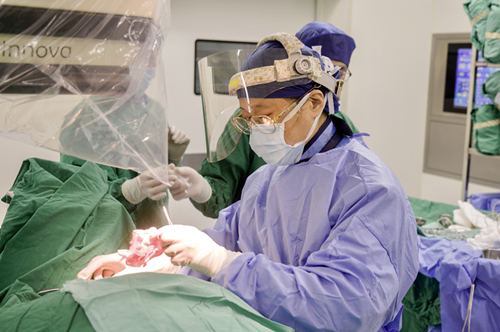- News
Our Hospital Completed the First MRI AutoDetect Pacemaker Implantation Surgery in Shanghai

Pacemaker implantation is one of the most effective treatment options for patients who require pacing therapy. However, according to statistics, 50%-75% of patients need an MRI examination after the implantation of a pacemaker, but the risk of parameter disturbance, electrode perforation, and even death can occur with conventional pacemakers. Although MRI-compatible pacemakers have been introduced in recent years, the MRI examination process is very cumbersome and inconvenient for both medical professionals and patients. Recently, Shanghai General Hospital has implanted the first pacemaker with MRI AutoDetect function for a patient with atrioventricular block. In this case, patients can receive unlimited MRI exams as needed within 14 days once the MRI AutoDetect function starts. The device will not only ensure safety, but also save time and improve patients’ experience.
The emergence of fully automatic anti-magnetic resonance technology has greatly simplified the workflow of magnetic resonance examination. According to Prof. Fang Wang of cardiology department, the fully automatic MRI pacemaker is another major advancement in the field of cardic pacing. It not only completely eliminates the taboo against MRI examinations after pacemaker implantation, but also opens a 14-day “window period” with a single button. During this 14-day period, patients are free to enter and exit the MRI room, where the pacemaker automatically recognizes and switches to a pre-set “MRI mode” and switches to its original setting immediately after leaving the room.
Patients can have as many MRI exams as they need during this period without the need for repetitive programming, ensuring safety while maximizing time savings for physicians and patients, and improving treatment efficiency.
